A first-hand account of the Chicago School of Guitar Making''s Tube Amp Building Seminar
| More from the Seminar • See photos of the class • Watch a video of the class, including the amps being fired up • Take a tour of Specimen's gallery • See Specimen's projects in progress |
I suspect it’s not just the tones produced by veteran amp designs that creates the draw. There are plenty of emulations out there that come already built and ready to plug in, from the closest vintage spec to models with the most modern updates and refinements—and plenty of actual vintage amps, too, for those looking for nothing but the real thing. The fact is, the number opportunities for instruction in building these classics has increased in recent years, and attracted greater and greater interest among players and gear enthusiasts of almost every stripe. That alone seems to testify to a growing thirst not just for the tones, but for the concepts behind the tones, for the know-how, and perhaps most importantly, the kind of simple “hands on” experience that has become a rare commodity in the age of disposable, mass-produced consumer products.
PG’s editorial director, Joe Coffey, attended a similar class offered by Bruce Egnater last year, and reported on a great, rewarding experience—and he brought back a great-sounding amp, too—so I decided to take the opportunity to try out a class for myself.
The Chicago School of Guitar Making
The Specimen Guitar Shop, owned and operated by Ian and Nadine Schneller, is the home of both Specimen Products and the Chicago School of Guitar Making, which offers both weekly and weekend seminars in several guitar-related subjects, including tube amplifier building. Since Chicago is a comfortable driving distance for me, and a city I know well, it made sense for me to look there. I’d already visited Specimen’s website more times than I can remember to gawk at luthier Schneller’s whimsical musical inventions. I figured it would be just the place for me to spend a long weekend, so I signed up for the seminar running April 17–19.
Walking into the shop for the first time, I knew I’d made the right choice. More than a luthiery and a repair facility, the Specimen shop is also a gallery and an artist’s studio, a place where creativity and lighthearted inventiveness fit comfortably in among the workaday tools of the guitarmaker’s craft. Unusual instruments and other strange fruits of the imagination were as plentiful as the ordinary materials that went into making them.
All the courses are taught by Schneller, assisted by Jim Elkington, who’s been with Specimen for ten years. The school offers an ample selection of kits—all provided by Mojo Music—in a variety of flavors from the small Fender- and Marshall-type circuits to big, 100-watters. I settled on building a Tweed Deluxe model, a replica of the original design with the small addition of an artificial center tap on the filaments (to reduce hum and safeguard the power transformer) as well as an upgrade to a 3-prong AC plug. I didn’t already own an amp of that type and thought it would be cool to have one around the PG offices. It's a small, portable amp that promised to be a simple enough build that I’d be able to spend some time during the seminar doing my regular job—taking photographs, shooting video for PG, and talking with the other students.
And, while I’m not exactly a newcomer to the world of electronics, or the smell of solder fumes, I’d never built an amp from the ground up, and it had been a while since I spent any serious time at a bench hunched over a set of shematics. I wasn’t looking for the biggest challenge I could find. Fortunately, Specimen’s classes are geared toward students with a range of background experience, from curious beginners to more advanced solder jockeys. The building takes place under the watchful eyes and advice of Schneller and Elkington, and seminar participants frequently help each other out with suggestions, troubleshooting, or just an extra pair of hands. The mood throughout the weekend was one of collaboration and teamwork.
Specimen can accommodate up to eight students per class, and the seminar I took part in had a full contingent. Many were from the Chicago area, but a few had come from as far away as New York and Atlanta. One member of the seminar was building a Tweed Champ kit, and two others had chosen a Marshall-style 18-watt model. The rest were building the Tweed Deluxe model, so I was in good company. Specimen provides an individual workbench for each student and all the tools necessary to do the job (but you’re welcome to bring your own if you like).
Ready, Set, Build
After introductions the first morning, Schneller began right away to describe the goals of the course and the various stages of the building process: installing the hardware on the chassis, loading components onto the eyelet boards, and the many factors involved in assembly and point-to-point wiring. There were plenty of questions and answers as we spent some time going over the functions and values of the components, capacitor types, resistor color codes, and the like. Schneller also explained section by section the virtues of the early Fender amp designs, and the reasons for their great durability, a quality that makes them the perfect foundation for the kind of course he aims to teach.
From there, each student found a workstation and began the build; each of us worked alone at his own pace, as Schneller and Elkington made the rounds to check on progress, point out details, and make recommendations. Throughout the course, both explained and demonstrated the effects of playing with coupling capacitor values, negative feedback and bypass capacitor values, elements that have a large role in shaping the tone of the amp. As the members of the class began to reach each new stage in the process, we’d gather around one particular amp for a demonstration of the next set of tasks. Schneller used this routine to emphasize one of the core principles of the amp-building course: the importance of lead dress in construction. He discussed many different methods of wiring, and the problems to watch out for in the construction, along with topics such as parasitic oscillation and RF interference. Schneller’s own Specimen amplifiers are inspired by the same philosophy of simplicity and build quality. “You could say I’m fanatical about overbuilding,” he remarks, “and I want the amps I build to be used for generations.”
The course’s loyalty to minimal vintage designs is about more than just the kind of simplicity that attracts beginners, though. Schneller explains that using faithful original designs does allow him to introduce students to the topology and internal structure of the build in relatively short order. But a major goal of the seminar, he says, “is to get students to a fundamental understanding in order to to put them in position for beginning to experiment with modifications and adding modern elements into the designs.” Too much flexibility can be distracting, and the simplicity of these time-tested circuits also makes it easy to show how important the quality of construction is in the tone of a handwired tube amp.
“Almost any circuit will sound great, if it’s well constructed,” Schneller says. “That’s more important than whether or not you use the most expensive components.” The lesson was driven home, as predicted, when the completed Deluxes made their way, one by one, to the test bench to be fired up for the first time. Despite sharing all the same components, each amplifier sounded slightly different—which is not to say dramatically better or worse than the others, but distinctive enough to underscore the principle that the addition of human hands and human skill into the construction process plays a key role in the final outcome.
Having learned that lesson from a good instructor who’s eager to share his understanding and experience (and who also appears reluctant to play the role of the dogmatic guru), I am eagerly looking forward to my next build opportunity. Whether it’s another Specimen seminar or something else, I can’t say—but as we joked around on the last day of the class about Fender’s “friday-afternoon” amps, and imagined ourselves to be very much like the groups of women working in Leo’s factory fifty years ago, trading wisecracks and gossip while we put the finishing touches on amplifiers very much like the ones they made, the rewards of building something with my own two hands came back into sharp focus. It was the prospect of returning to work in front of computer that began to seem like the real irony.
For more information on the Chicago School of Guitar Making and the Tube Amp Building Seminar, visit the Specimen website: specimenproducts.com
Click "next" or one of the thumbnails below for a gallery of photos from the seminar.
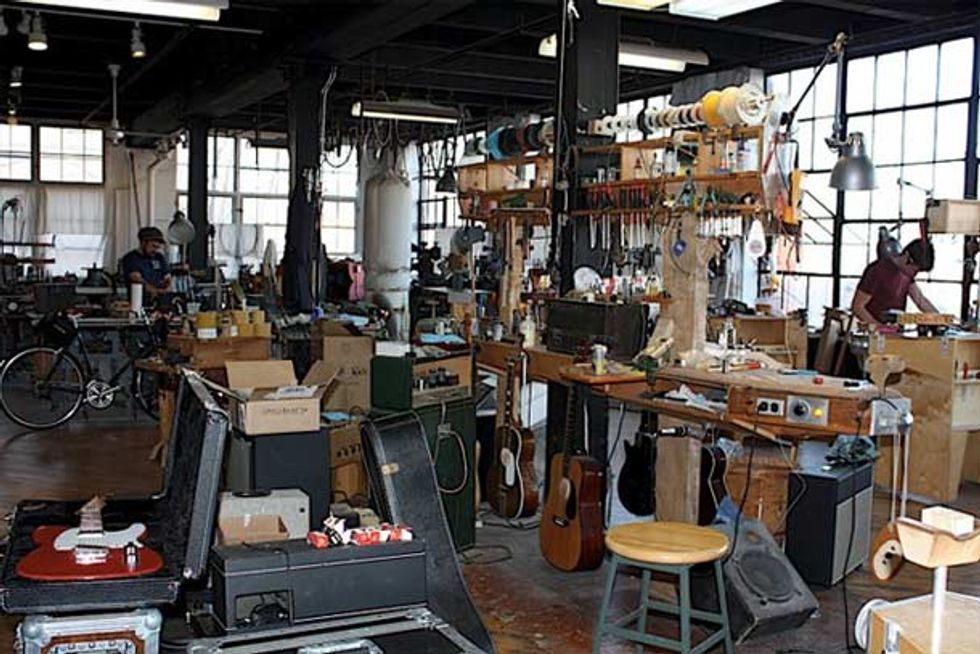
|
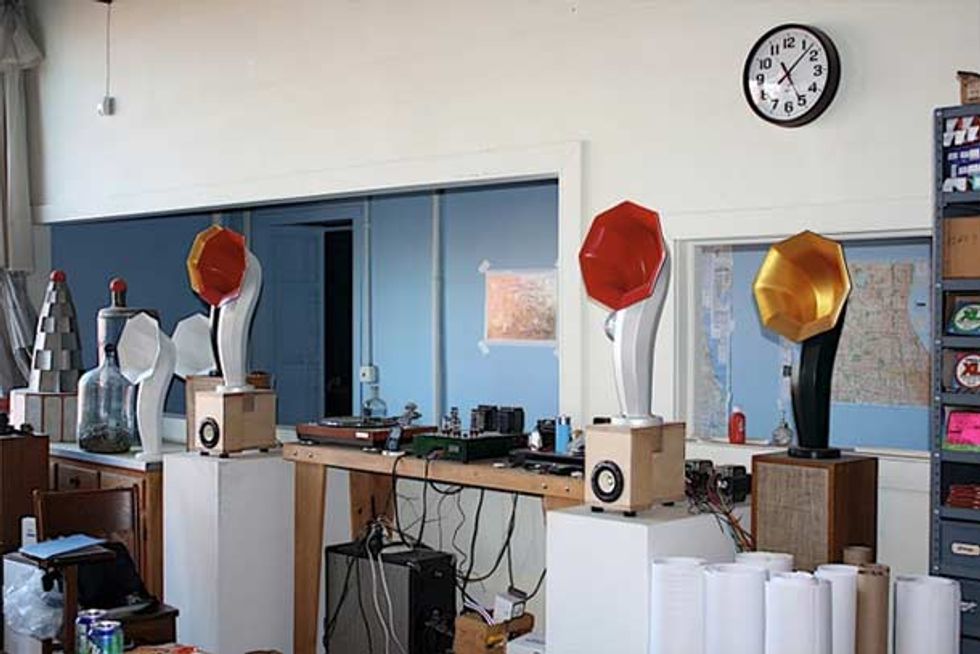
|
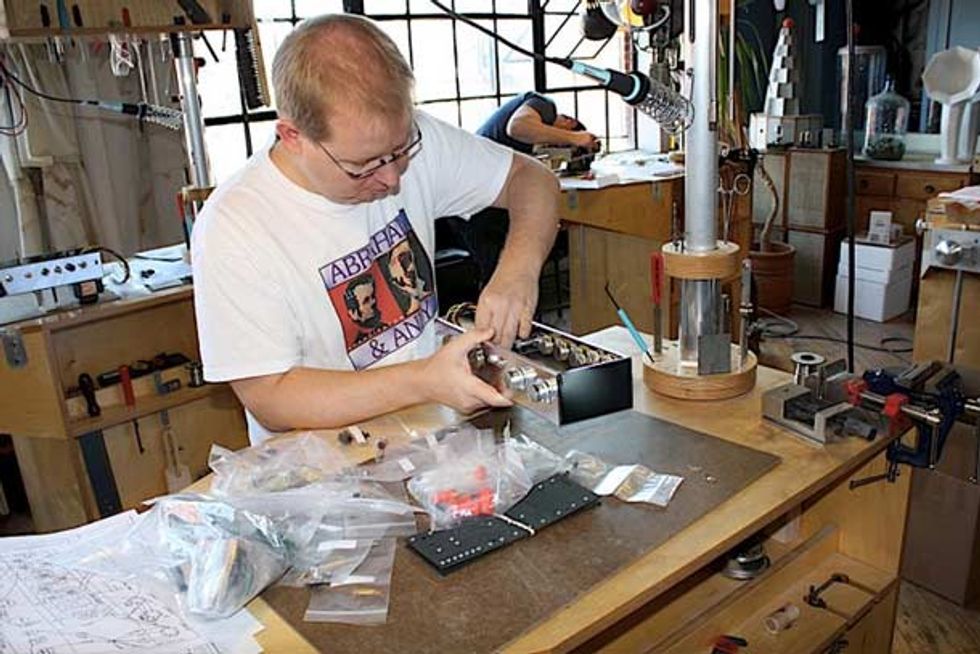
|
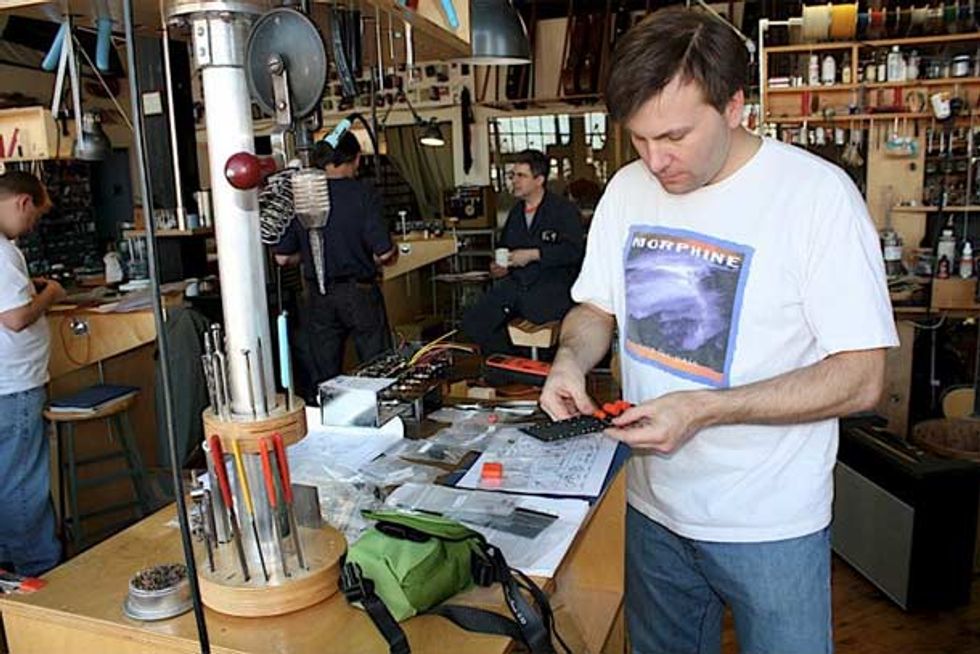
|
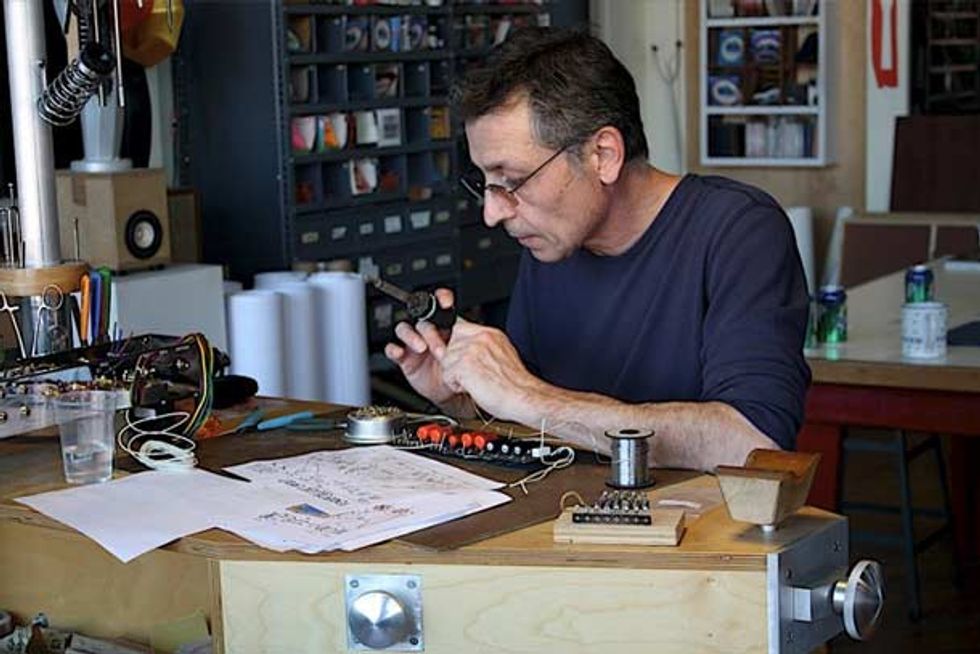
|
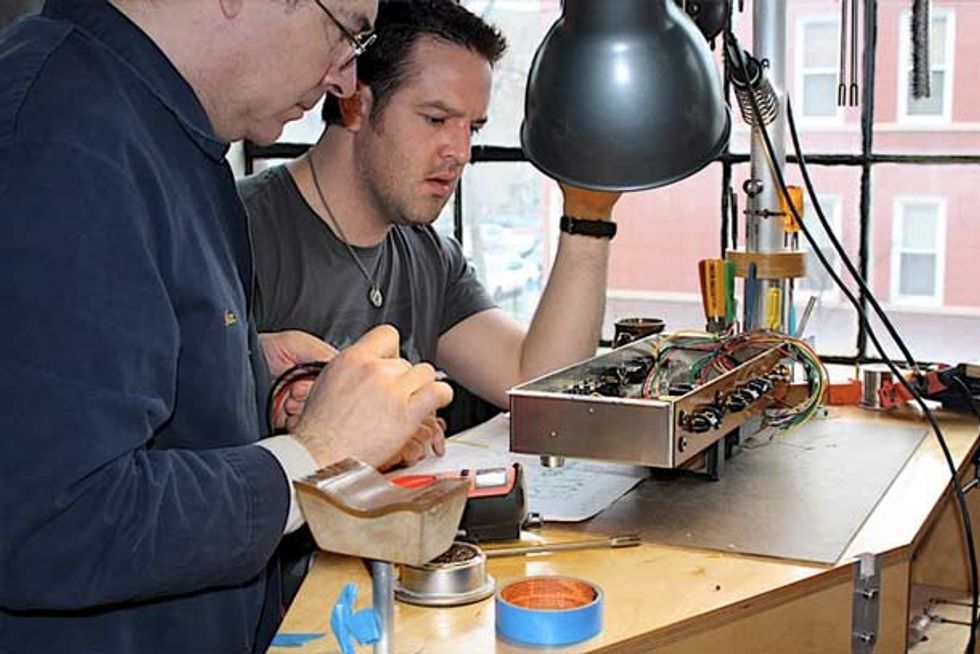
|
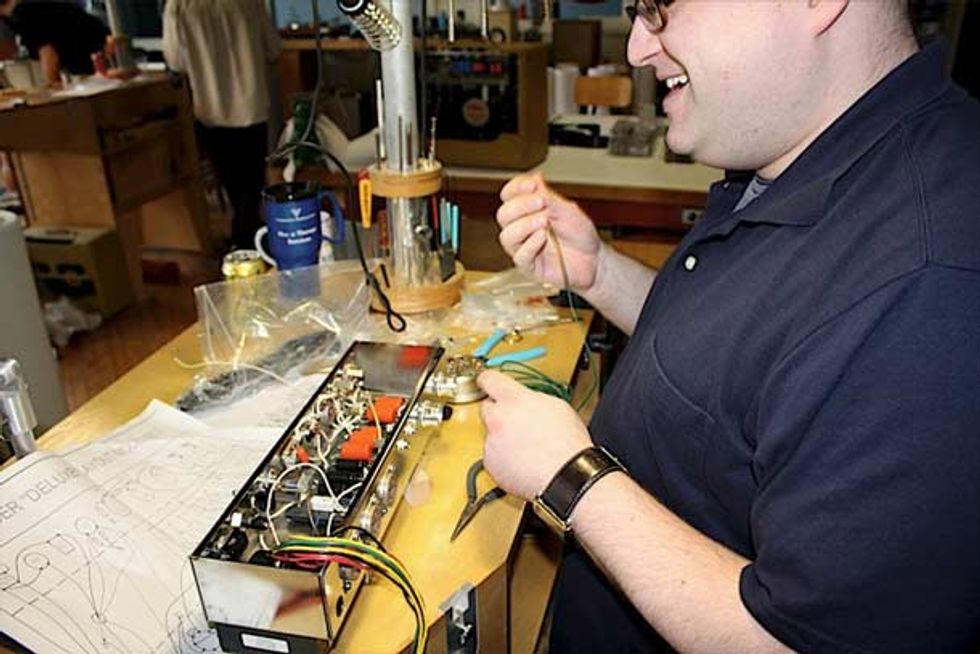
|
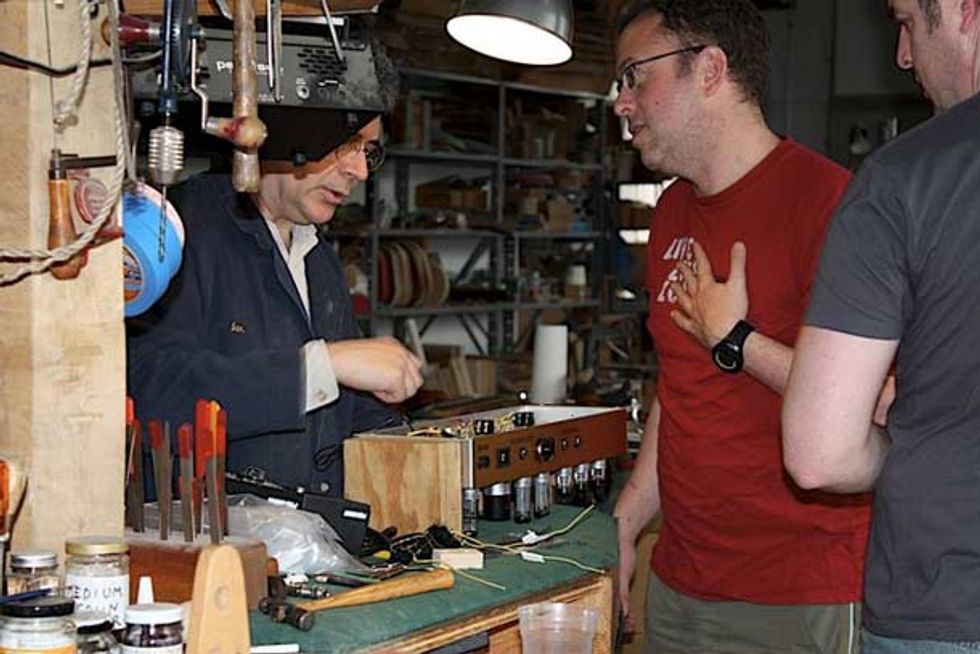
|
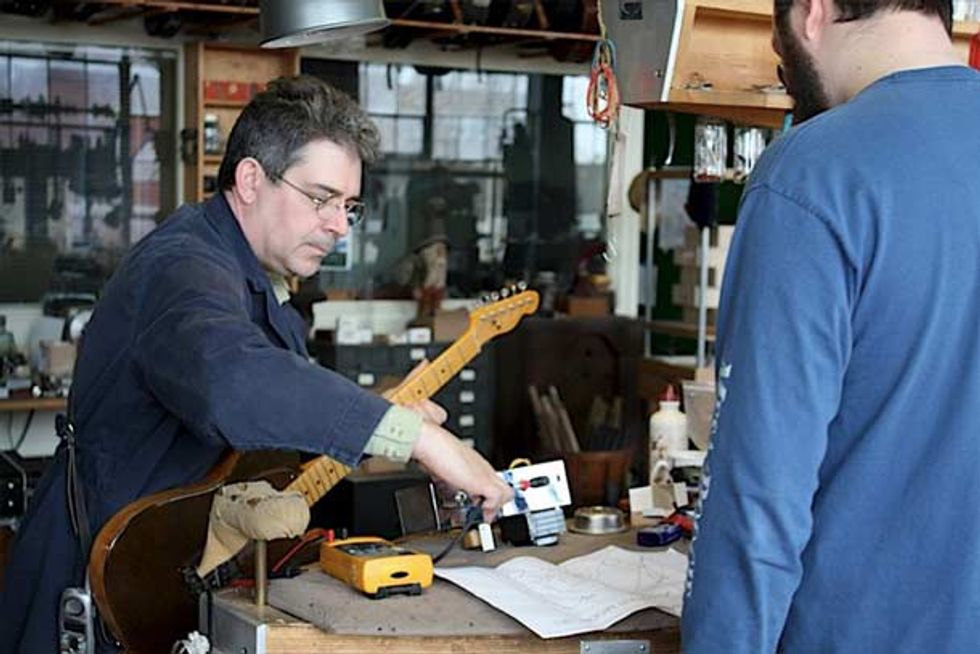
|
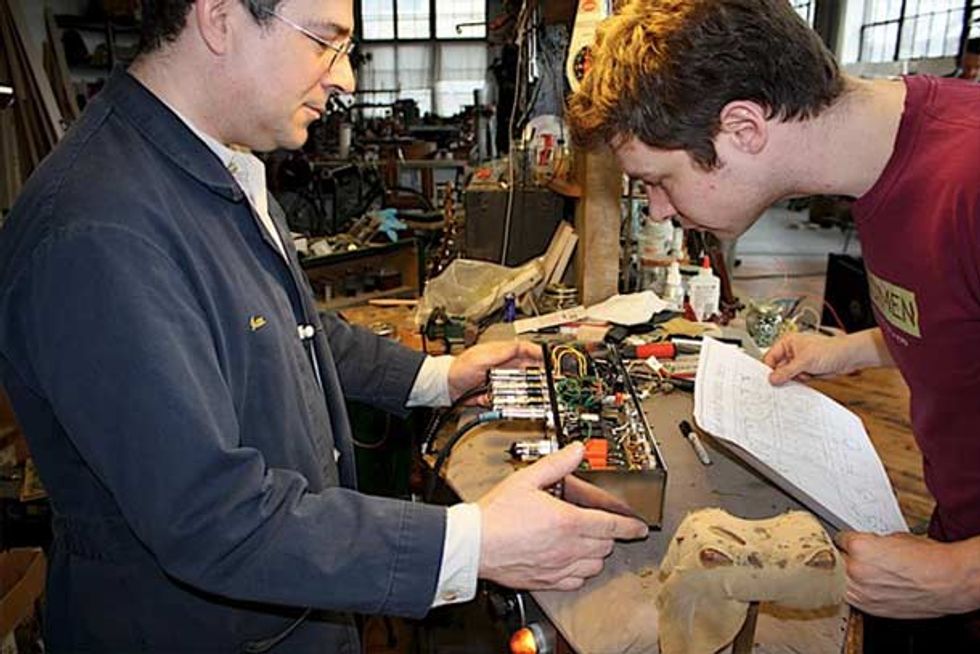
|
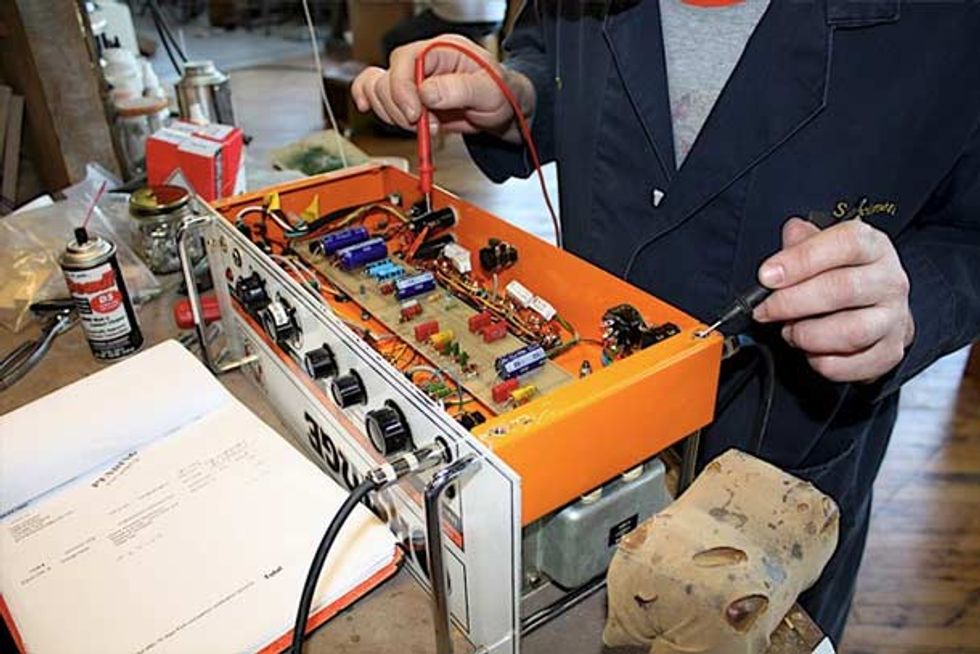
|
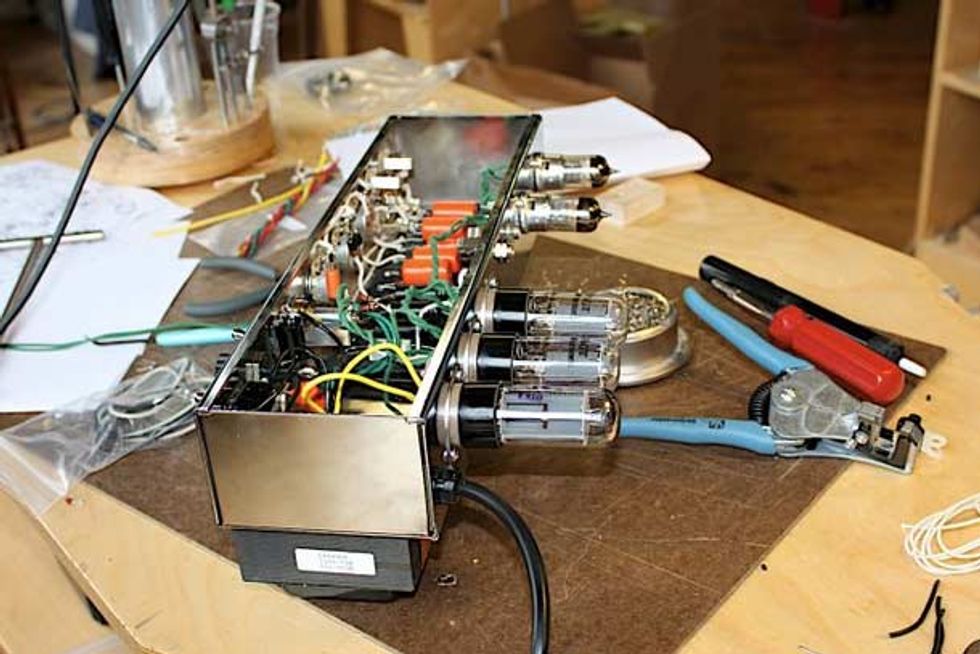
|
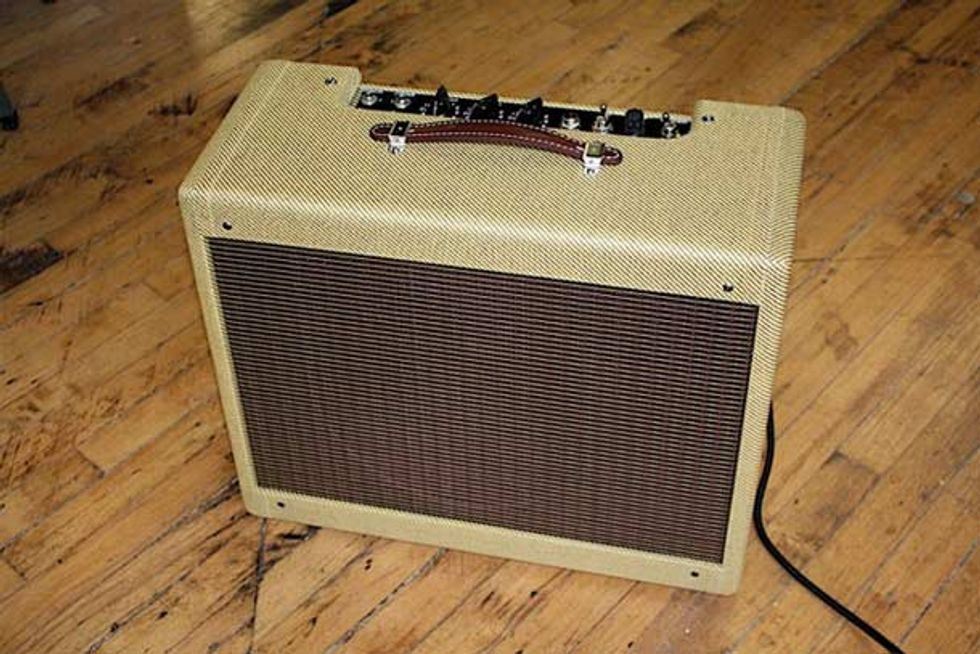
|
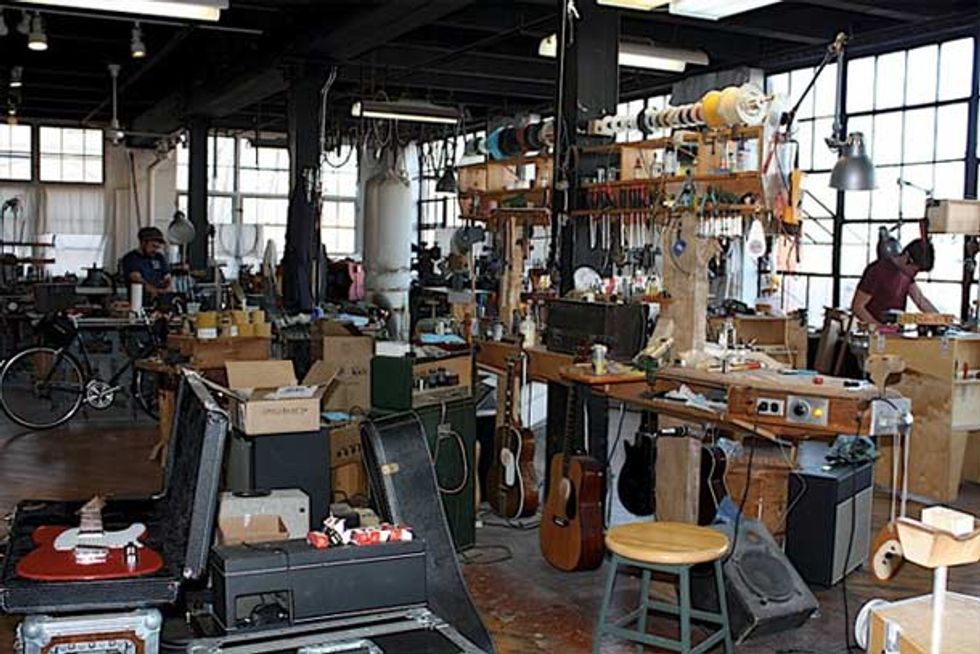
The Specimen test bench, surrounded by instruments and amplifiers in for repairs.

|

|

|

|

|

|

|

|

|

|

|

|

|
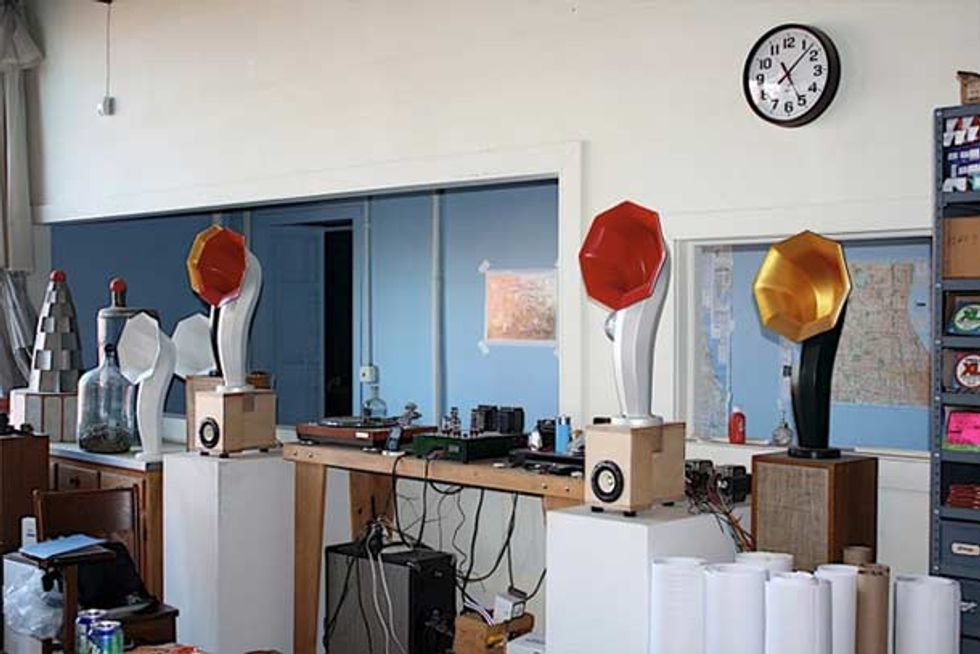
These Specimen horns, powered by an EL34 hi-fi stereo amplifier connected to an iPod, provided great music for all three days of the weekend seminar. The amplifier is Schneller’s own version of a design by Joseph Esmilla (posted on the Angela Instruments website), and Specimen now offers classes in building it.

|

|

|

|

|

|

|

|

|

|

|

|

|
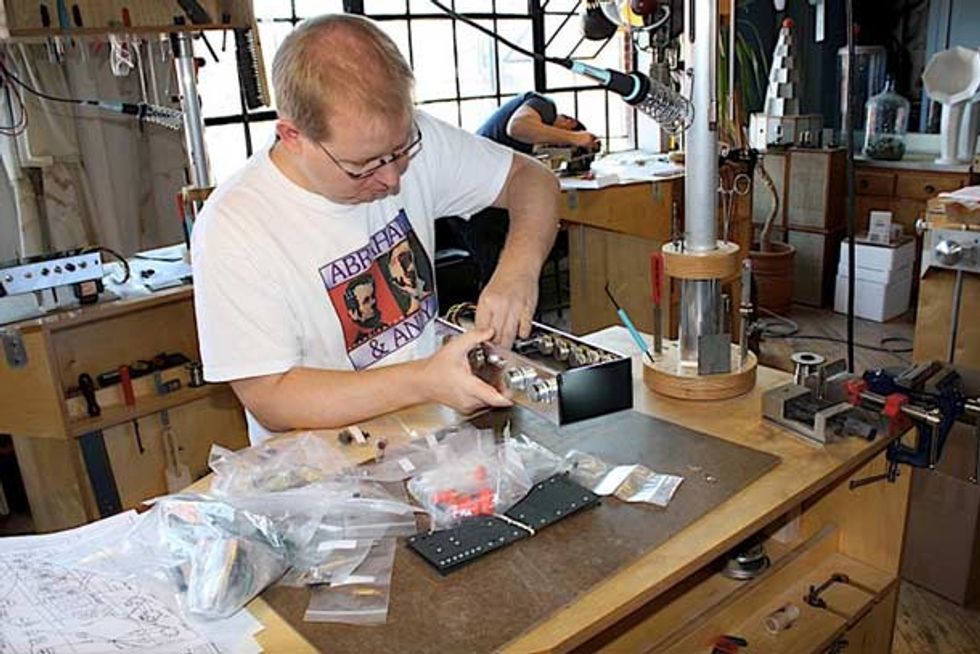
Seminar student Justin Deverell of Chicago installing the tube sockets on his chassis. Unlike me, Justin was careful and did this correctly the first time.

|

|

|

|

|

|

|

|

|

|

|

|

|
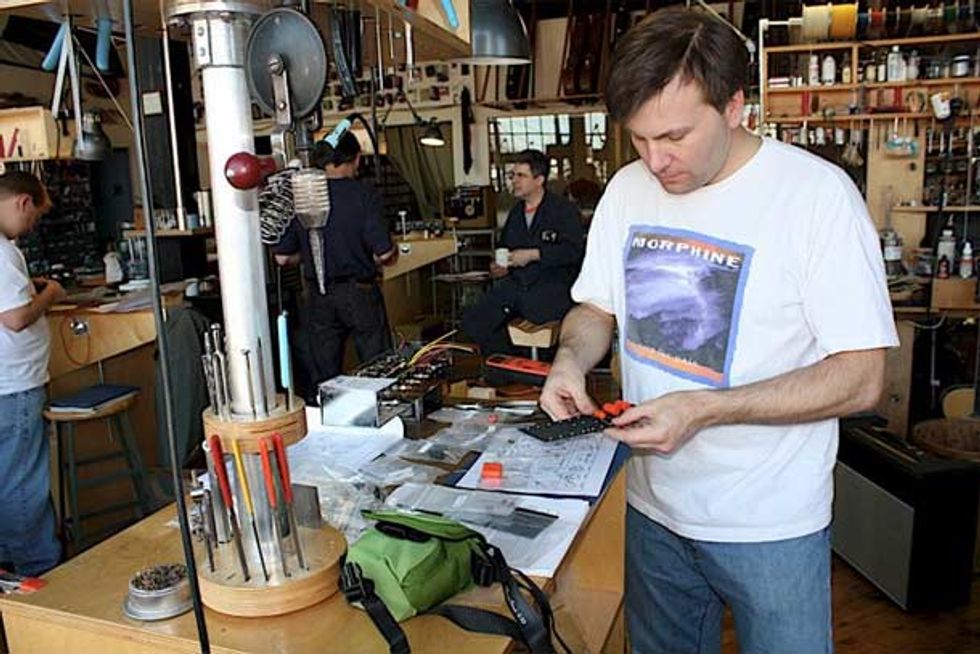
Seminar student Dixon James of Decatur, GA loading components onto the motherboard.

|

|

|

|

|

|

|

|

|

|

|

|

|
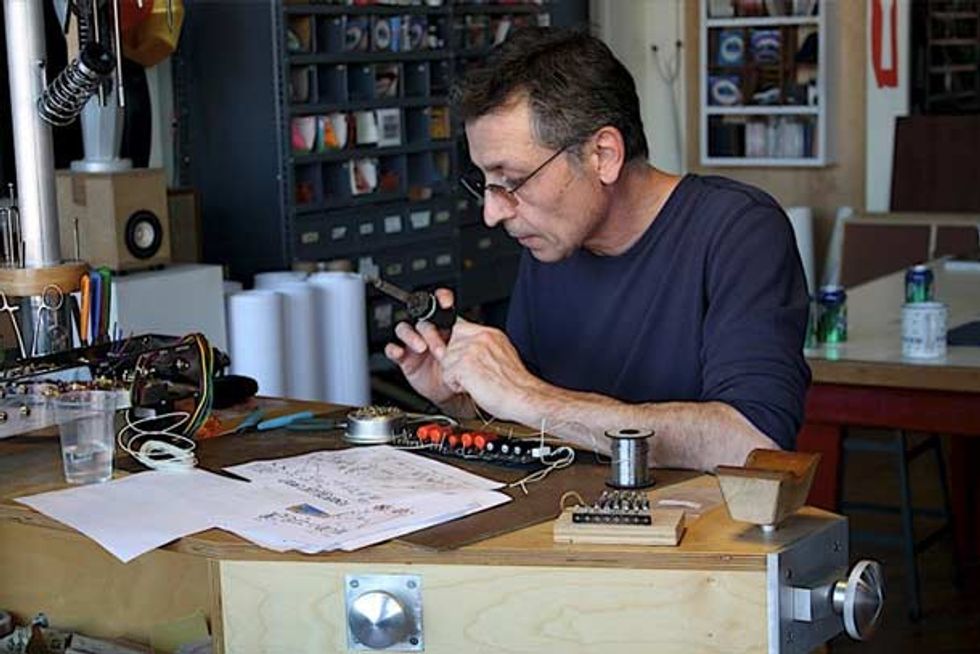
Seminar student Lou Femenella of Brooklyn, NY, studies the schematic as he prepares to solder components to the motherboard.

|

|

|

|

|

|

|

|

|

|

|

|

|
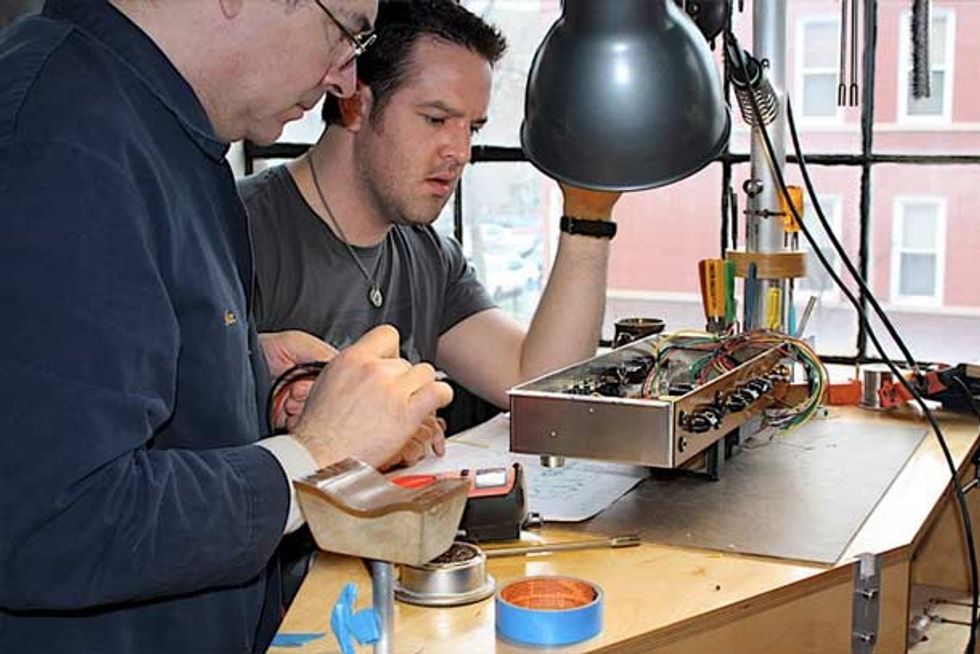
Ian Schneller assisting seminar student Brendan Casey of Chicago with his Marshall-style 18-watt amp.

|

|

|

|

|

|

|

|

|

|

|

|

|
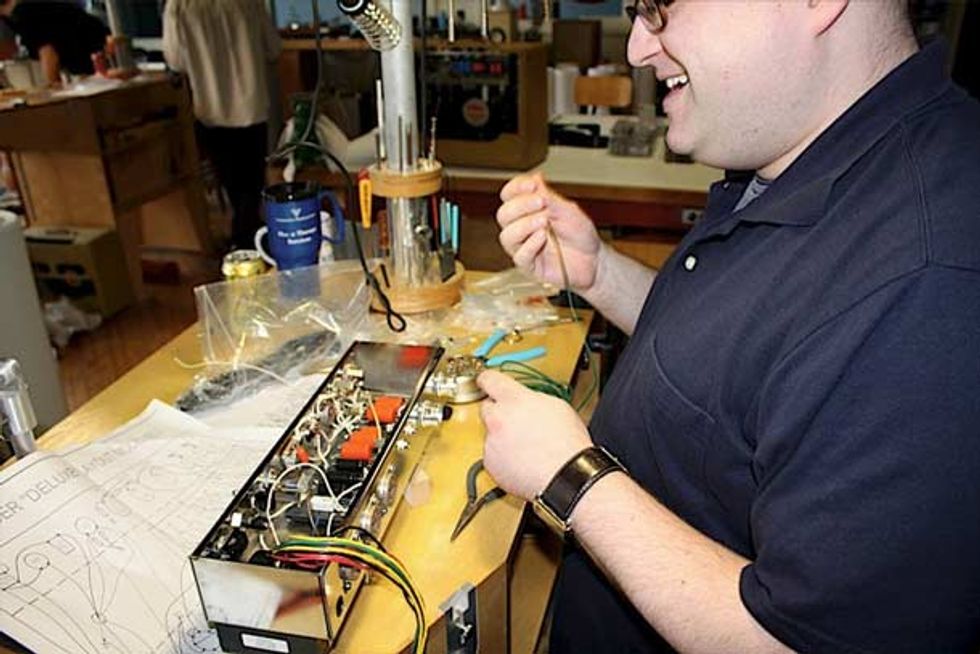
Seminar student Gene Magee of Chicago preparing leads for the center tap.

|

|

|

|

|

|

|

|

|

|

|

|

|
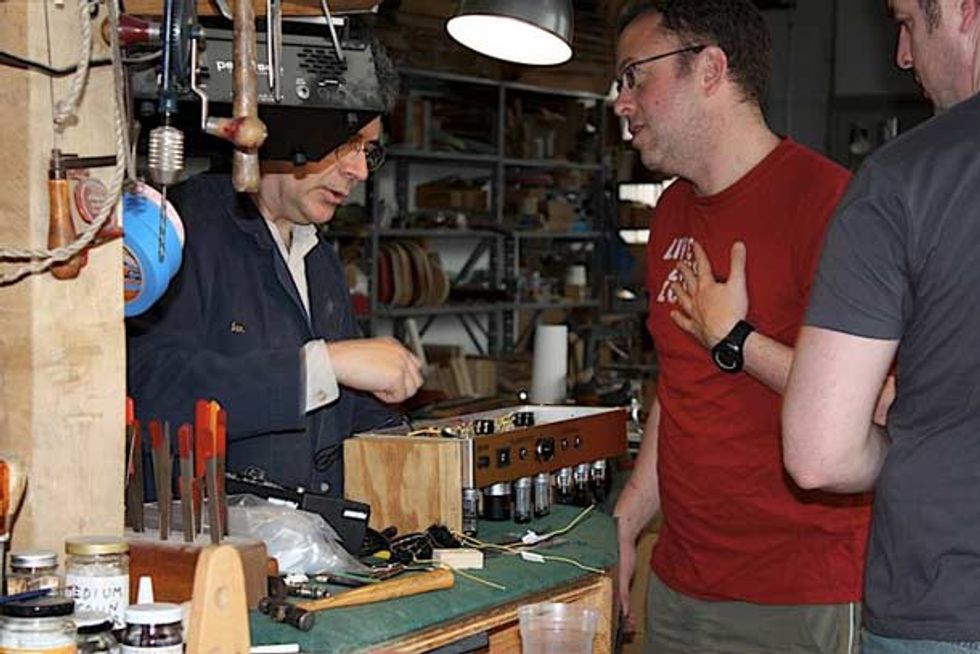
Ian Schneller giving seminar students Adrian Novik and Brendan Casey, both of Chicago, some pointers on their Marshall-style 18-watt amps.

|

|

|

|

|

|

|

|

|

|

|

|

|
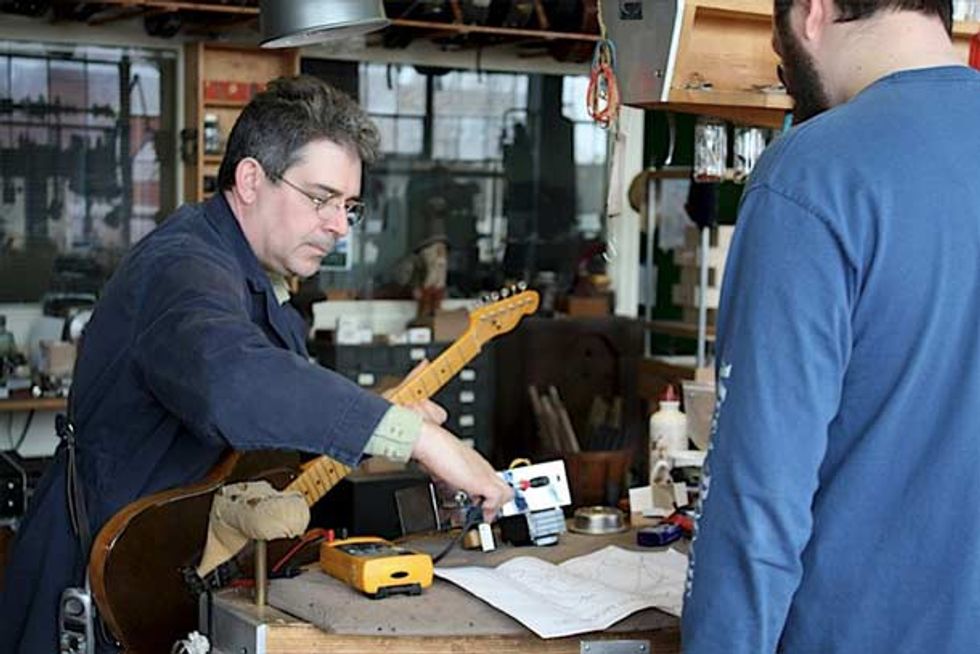
Ian Schneller firing up student Mike Dunn’s Tweed Champ model on the test bench. (Click here to see a video of Mike demonstrating the amp and the mods he added)

|

|

|

|

|

|

|

|

|

|

|

|

|
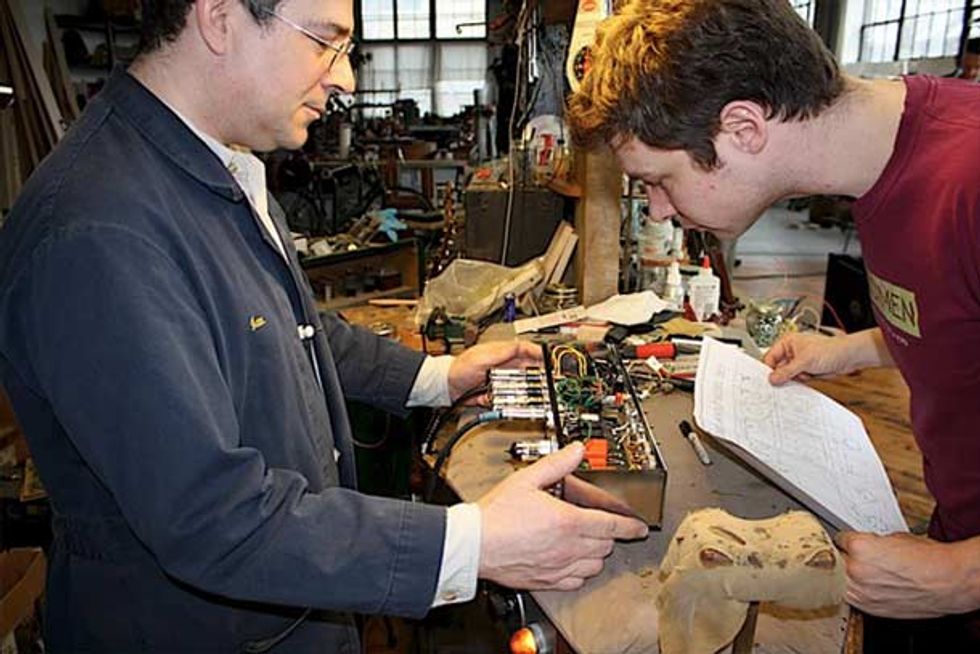
Ian Schneller and Jim Elkington giving my amplifier a thorough check before firing it up for the first time. They discovered that I had, in an early moment of inattentiveness, installed the rectifier tube socket backwards—Doh! It took me a few minutes to rewire it, and it was back on the bench, where it roared to life.

|

|

|

|

|

|

|

|

|

|

|

|

|
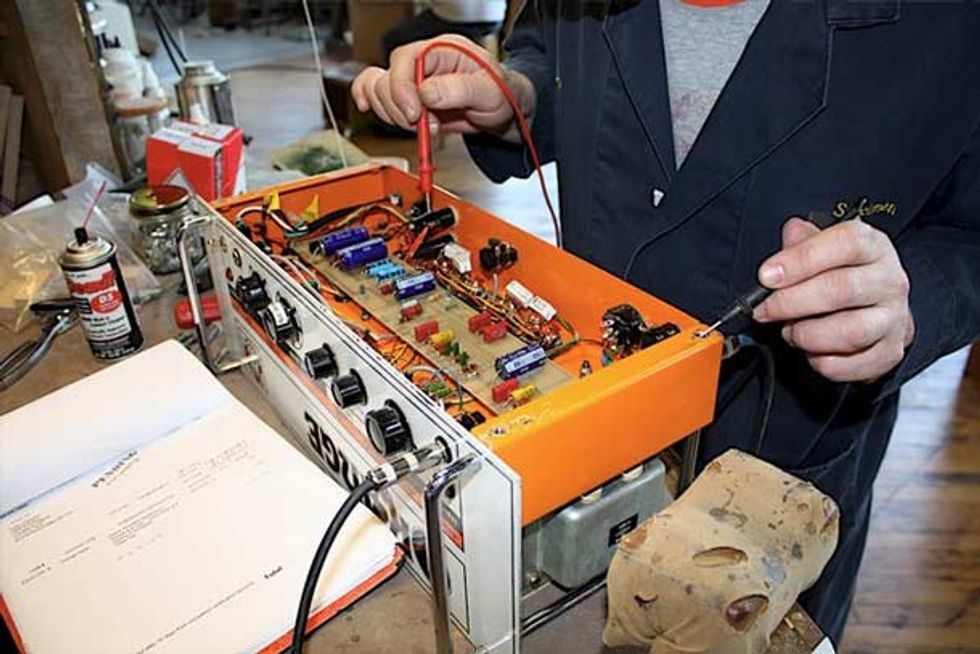
Ian Schneller troubleshooting an Orange amp that came into the Specimen shop for repair. Several non-Specimen specimens like this one served as touchpoints for learning throughout the weekend.

|

|

|

|

|

|

|

|

|

|

|

|

|
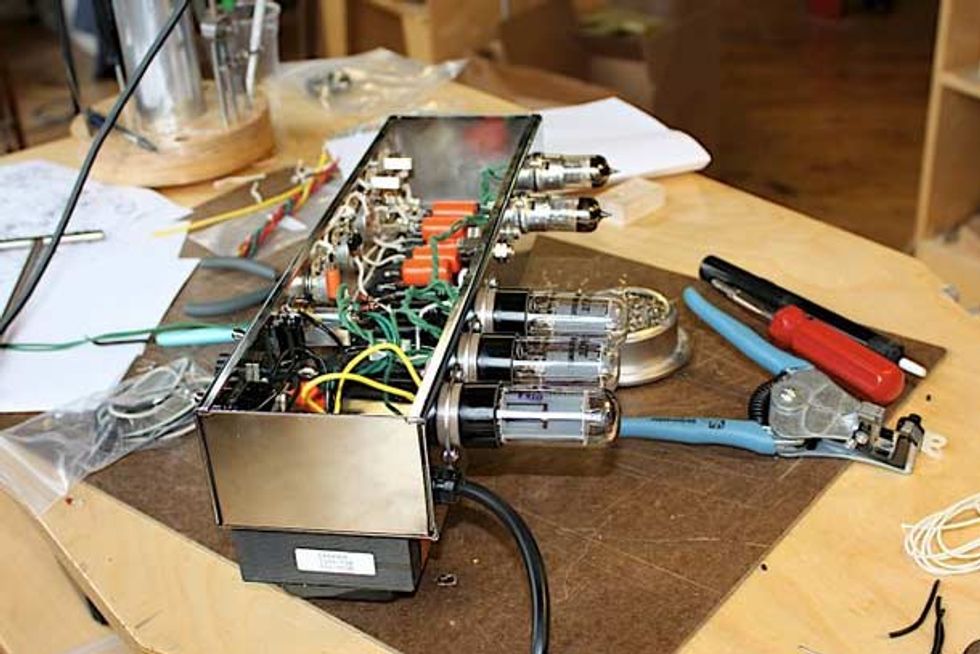
My completed Tweed Deluxe replica, ready to be installed in its cabinet.

|

|

|

|

|

|

|

|

|

|

|

|

|
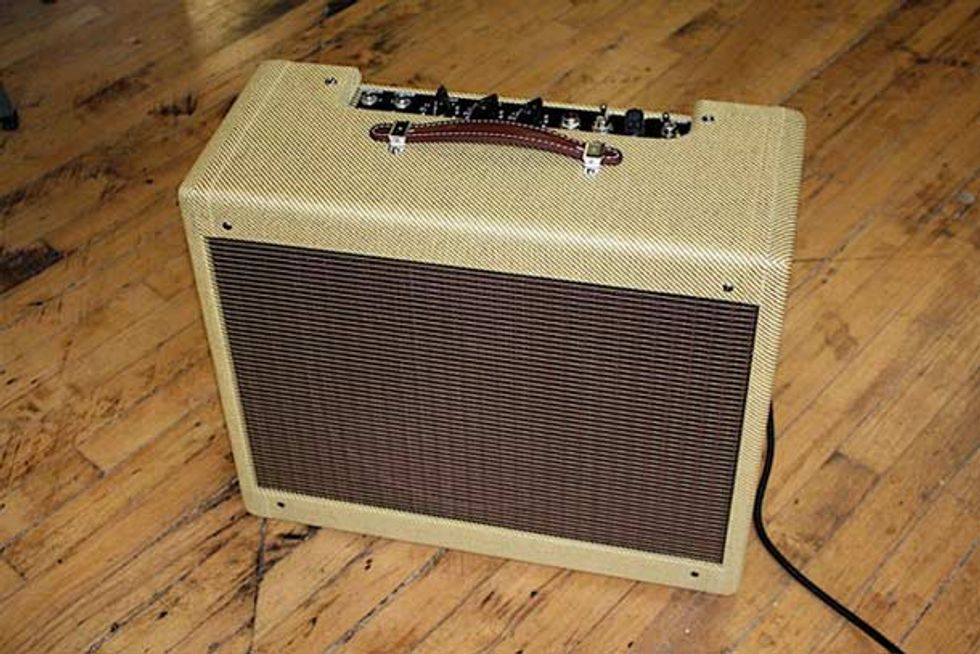
This is my amp, ready to go. It sounds great (if I do say so myself).

|

|

|

|

|

|

|

|

|

|

|

|

|

